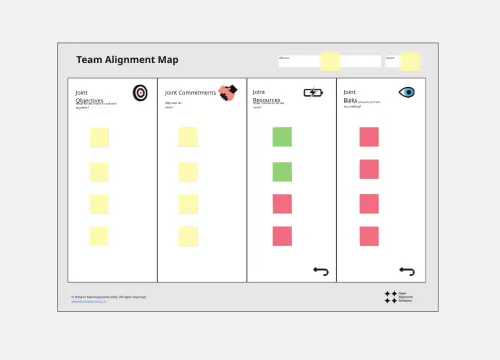About the About Me Template
At Miro, we empower people to present themselves with clarity and confidence. Our About Me Template is designed to help users share their professional journey and personal highlights in a visual and organized manner.
What's an About Me Template?
An About Me Template is a structured framework that helps users collect and present personal and professional information about themselves. It's a digital canvas to introduce oneself to peers, potential employers, or clients. Here are three benefits of using one:
Clarity: The structured about me format ensures you present all relevant information without forgetting important details.
Professionalism: It gives a polished and standardized presentation, elevating your professional image.
Personalization: While structured, the template allows room for customization, ensuring your personality shines through.
How to use the About Me Template in Miro
Our template is easy to navigate, with dedicated fields for various categories:
Personal info: Begin with your name, date of birth, and a brief description or bio. This sets the tone for the rest of the template.
Achievements: Highlight your accomplishments, awards, and significant milestones here.
Education: List your educational qualifications, institutions attended, and any other certifications.
Contact Info: Add your email, phone number, LinkedIn profile, or other relevant contact details.
Hobbies: Share a bit about what you love doing in your spare time. It gives a personal touch and offers insight into your personality.
Skills: List your key competencies and expertise here.
Languages: Highlight the languages you speak and your proficiency level in each.
Work experience: Outline your career journey, starting with your most recent position, the company name, and a brief description of your roles and responsibilities.
Remember that authenticity is paramount when using the About Me Template. While showcasing your qualifications and achievements is essential, intertwining your unique story and personal touch is also important. Visual elements, like photos or infographics related to your journey, can make your template more engaging and memorable. Regularly updating your About Me Template ensures you're always ready to present your most current version of yourself, whether for networking, job opportunities, or collaborations. Happy designing!
About Me Template FAQs
Can I customize the About Me Template?
Yes. While the template provides a structured format, it's fully customizable. Adjust colors, fonts, or add additional fields as you see fit.
Is the template shareable with colleagues and peers?
Like all Miro templates, the About Me Template can be shared via a link or as an image or PDF.
What if I have more than one hobby or skill to list?
The template is flexible. You can list multiple hobbies, skills, or any other category. If you need more space, simply expand the relevant section.






